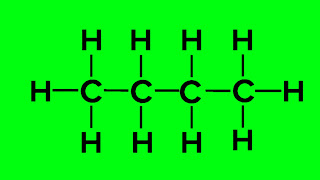Butane is a type of gas that we commonly use as fuel. The molar mass of butane is the combined mass of all the atoms in one mole of butane molecules. Butane is a hydrocarbon composed of four carbon atoms and ten hydrogen atoms. The molecular formula of butane is C₄H₁₀. This means that each butane molecule consists of 4 carbon atoms and 10 hydrogen atoms. The molar mass of butane is 58.12 grams per mole. Here's how we can calculate it practically.
To find the molar mass of butane, we add up the atomic masses of each atom in the molecule. The atomic mass of carbon (C) is about 12.01 grams per mole, and the atomic mass of hydrogen (H) is about 1.008 grams per mole.
Butane has 4 carbon atoms and 10 hydrogen atoms. So, we calculate it like this...
(4 × atomic mass of carbon) + (10 × atomic mass of hydrogen)
= (4 × 12.01 g/mol) + (10 × 1.008 g/mol)
= 48.04 g/mol + 10.08 g/mol
= 58.12 g/mol
Therefore, the molar mass of butane is approximately 58.12 grams per mole.
To find the molar mass of Butane or any other compound, follow these steps.
(1) Write Down the Chemical Formula.
Start with the chemical formula of the compound you want to find the molar mass for.
(2) Identify the Elements Present.
Identify each element in the compound and note down its atomic symbol.
(3) Find the Atomic Mass of Each Element.
Look up the atomic mass of each element from the periodic table. This is usually given in atomic mass units (amu) or grams per mole (g/mol).
(4) Count the Number of Atoms of Each Element.
Count how many atoms of each element are present in the compound. This is indicated by the subscript number following each atomic symbol in the chemical formula.
(5) Multiply the Atomic Mass by the Number of Atoms.
Multiply the atomic mass of each element by the number of atoms of that element in the compound.
(6) Add Up the Results.
Add together all the values obtained in the previous step. This gives you the molar mass of the compound in grams per mole (g/mol).
Let's do an example.
Find the molar mass of water (H₂O).
(1) Chemical Formula = H₂O
(2) Elements Present = Hydrogen (H) and Oxygen (O)
(3) Atomic Mass.
The atomic mass of Hydrogen (H) = 1.01 g/mol
The atomic mass of Oxygen (O) = 16.00 g/mol
(4) Count of Atoms.
2 atoms of Hydrogen (H)
1 atom of Oxygen (O)
(5) Calculation.
(2 × 1.01 g/mol) + (1 × 16.00 g/mol)
= 2.02 g/mol + 16.00 g/mol
= 18.02 g/mol
6. Result.
The molar mass of water (H₂O) is 18.02 grams per mole (g/mol). So, the molar mass of water is 18.02 g/mol. So, this is the right way to find the molar mass of butane. By following these six simple steps you can find the molar mass of any compound as we did in the example above.
FAQ About Molar Mass Of Butane.
The chemical structure of butane is relatively simple. It is an alkane hydrocarbon with the molecular formula C₄H₁₀. Butane exists in two structural isomers. First n-butane (normal butane) and 2nd isobutane (methylpropane).
 |
| n-Butane. |







0 Comments
Kindly share your views